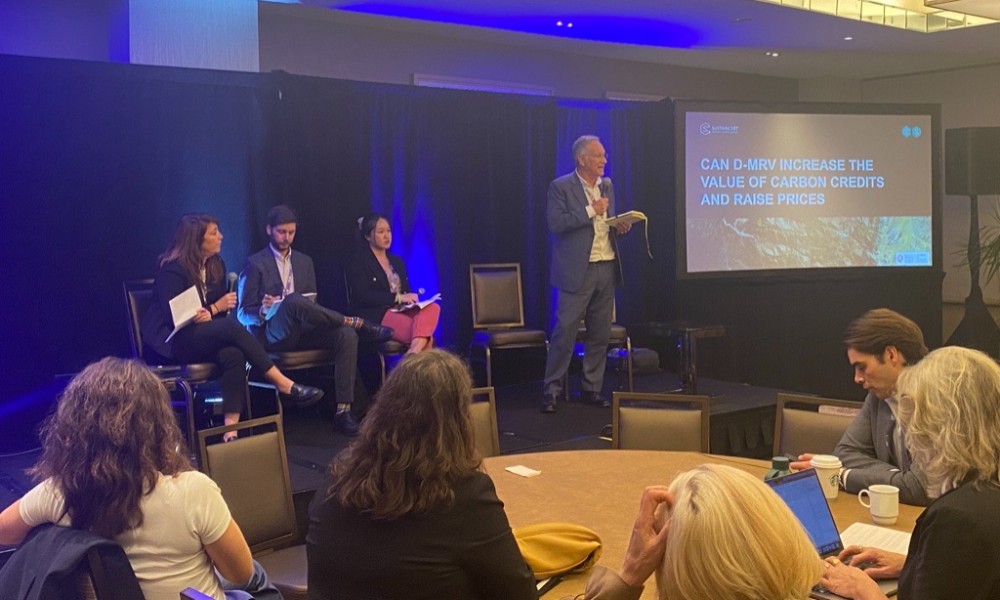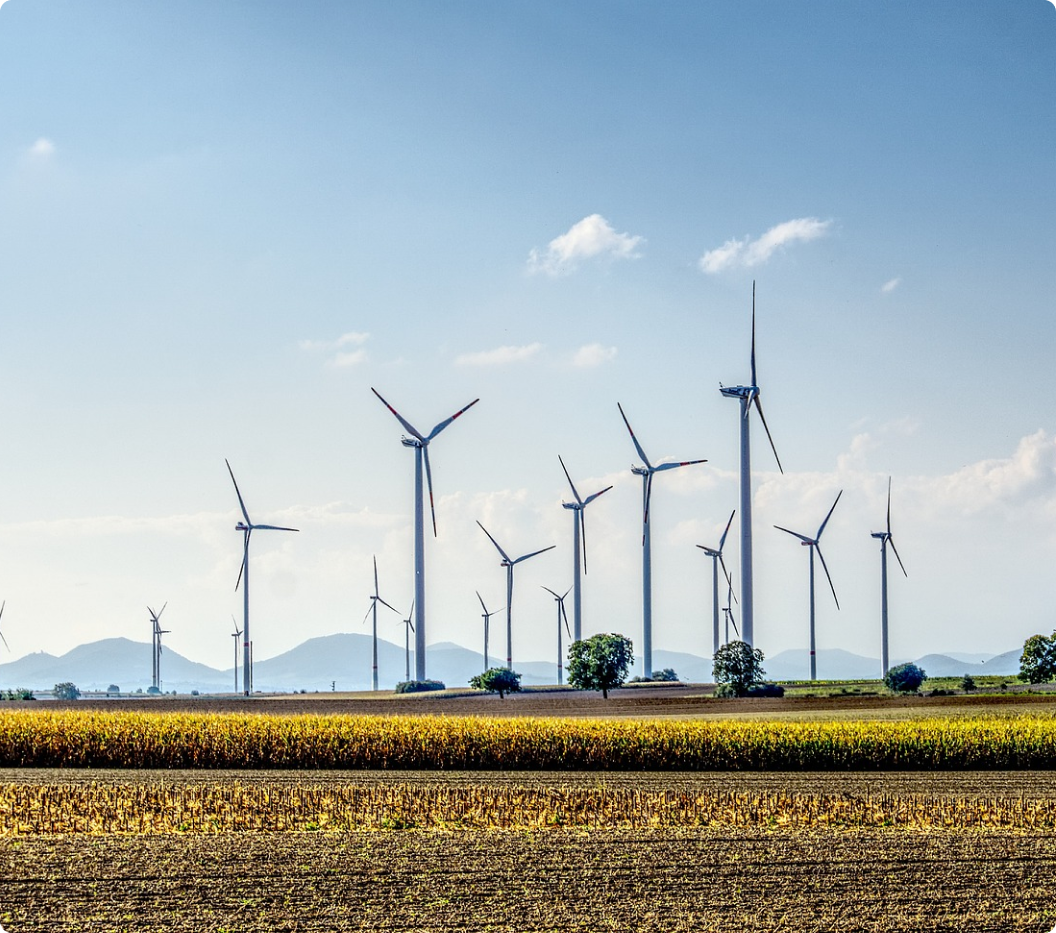
February 2023
Can DMRV increase the value of carbon credits and raise prices? Insights from NACS
The North America Climate Summit took place on 19-21 September in New York, with key discussions taking place on how to best use technology to accelerate credible climate action in carbon markets. SustainCERT hosted an event looking into the role of Digital Monitoring, Reporting and Verification (DMRV), where we heard insights from the work of guest panelists, Jonathan Shopley, Managing Director of External Affairs at Climate Impact Partners; Cindy Chiang, Carbon Solutions Lead at Pachama; and Ben Rattenbury, VP of Policy at Sylvera. The message was clear: digitization is the future of MRV, and we need to accelerate the adoption of these crucial technologies. But what can DMRV do for carbon credit prices and trust in the market?
Clients buy into DMRV because of enhanced transparency and risk reduction
Jonathan finds that most of his clients' value transparency and the opportunity to track projects in real time. “DMRV will allow higher prices for carbon credits because its features, such as continuous data flow, are valued by both investors and project developers. For investors, this creates more confidence that progress is happening on the ground on projects like cookstoves and forestry. It also enhances understanding of risks and the ability to mitigate them.”
For project developers, continuous data means reducing the time it takes to get a project ready for verification and access to the market. For example, in forestry projects, this can take 5 years with conventional methods, but it can be much faster with DMRV. “Moving through the market at speed is important because it means project developers get funding earlier, and newer vintages of carbon credits get a higher price,” Jonathan explains.
According to Cindy, technology can also contribute to feasibility analysis to check potential new projects. “Small-scale project developers such as private landowners would not be able to afford manual feasibility analysis, but digital solutions enable them to input their data to get the initial go-ahead of feasibility. This operational efficiency will also translate to financial efficiency for new projects.”
While digitization helps reduce friction in the market, Jonathan points out that it requires changing how things have been done before. This means there are some hurdles to overcome for all actors involved – but it’s going to be worth it as enhanced transparency, real-time flow of data and improved risk management will benefit both investors and project developers.
Tech solutions can enhance trust in the market
Lack of trust has been a major issue in the carbon market, but Ben argues that DMRV can enable greater accuracy, precision, and speed for carbon credit data thanks to real-time on-site monitoring – therefore increasing trust.
“DMRV and remote technologies can update old-fashioned measuring techniques, such as checking the circumference of trees in forestry projects. These methods can lead to varying estimates, while tech like laser scanners allow us to access more accurate data and can create a new basis for carbon quantification per hectare.”
However, Ben also points out that many of the studies criticizing the market are using the same tech to reach their conclusions. “This is leading to a race to the top for the best tech to address shortcomings in the carbon market.”
Jonathan adds that real-time data can allow rapid turnover by showing what approaches are not working, further improving the quality of carbon credits. “Our industry is committed to continuous learning and DMRV could leverage it even further. Information collected for DMRV could even be made available for analysts to show whether we are under- or over-crediting, and correct for issues as they arise.”
Outputs of DMRV like increased transparency, insights from real-time monitoring, and having better data for risk analysis are key factors in creating trust between actors.

What’s next for DMRV?
So, where did we land on our initial question – can DMRV increase the value of carbon credits and raise prices? According to our panelists, the answer is yes, while the audience finds that trust will increase but whether the price will increase remains uncertain. Meanwhile, DMRV enables features valued by investors and project developers, such as continuous data flow, allowing for risk management and speed at getting to market. It also increases operational efficiency and trust through accurate and timely data measurement.
This being said, tech is not a silver bullet that will automatically fix all the issues in the voluntary carbon market. Collaboration and integration of efforts are key to achieving the benefits of DMRV. “DMRV is tossed around as a one-stop shop solution, but each stakeholder is asking for different things,” Cindy says. “We want to catalyze action for the whole community of actors. We are building models and platforms, but we need to also connect project proponents with auditors and standards.”
As DMRV solutions get adopted, the role of verifiers will change. “Ideally verifiers will audit the project model remotely and conduct spot checks in the form of site visits,” Cindy says.
While digital technologies are already out there, standards in the carbon market need to update their requirements to enable the adoption of digital solutions. Meanwhile, carbon market actors should work together to define how to best use DMRV to increase the value of carbon credits.
Learn more about DMRV
SustainCERT has published multiple white papers on DMRV.

